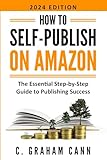Submitting Manuscripts and Stories
A collection of advice for writers submitting their books, articles and stories to publishers.

HOW TO SELL MANUSCRIPTS
There is no infallible rule for marketing successfully the wares of the brain. If one could be found, the great army of writers would be clothed in purple and fine linen, and fare sumptuously every day.
It is possible, however, to give words of encouragement and helpfulness as to the technique of disposition.
That is an admirable rule given by a successful business man to his son: "Find out what the public want, and give it to them," and it applies quite as much in the literary as the mercantile market.
Not long ago a manuscript novel came to the hands of a reader, who condemned it as twenty years too late. "The story is good in many particulars," she wrote its author, "but it is hopelessly old-fashioned." Keep up with the procession, and if possible head a new procession by starting, at the psychical moment, down (or up) a fresh path.
Practice indefatigably; make copy of everything, and everybody, and keep your note-book always with you. But do not submit all such copy to publishers! Doctor Holland wrote pathetically of this: "Man is willing to serve an apprenticeship to every trade but that of authorship. He expects to rush into print with his crudest beginnings, and is often very much cast down, and bad-tempered, when he does not succeed."
A shrewd analysis of the style and contents of the paper, journal or magazine, to which you expect to offer your wares, is most helpful, especially if you are canny enough to catch the trick of style that appeals to the susceptible spot in the editorial armor, for the arbiter surely has one. Is it for plot? or for style? tricks of phrase? or what not? Find it out, and send your manuscript to his liking. Then if the ground is not already covered by a similar product, you will stand a far better chance to win his favor.
Cultivate a calm philosophy, that shall look upon rejections as a matter of course, but cultivate, at the same time, a stiff determination to win before you are through. Be not cast down over one rejection, but send forth again, and yet again, until, if your manuscript comes back too steadily, you put on your most critical frame ,-of mind, and study it to find out why. You will probably discover something wrong that may easily be righted. The multitude of manuscripts that flood the editor's sanctum nowadays makes it necessary to strive with care to attain to all the small details that go toward making a successful impression.Be neat, be legible, be accurate, be persevering, be businesslike, be courteous and be calm. Above all, be generous to yourself in the way of critical revision, and in the supply of literary aids, for, like the Scripture bread on the waters, it will return to you after many days, in the shape of substantial gain and reputation.
PLACING A MANUSCRIPT
Perhaps there is nothing which is so disheartening to the literary aspirant as the return of the brain-child which has been wafted by the wings of the post to the editor selected as a recipient for it, with a half-confident, half-fearful feeling, which it is quite impossible to describe understandingly to those who have never experienced it.
With what eagerness we watch the mail after the shortest lapse of time which is at all reasonable to expect may have been required for a reply; and with what a sinking of the heart we receive from the hand of the postman the thick, heavy envelope which marks our failure.
It does not lessen our disappointment to know that men and women of genius have met with the same defeat—that success rarely comes at the first attempt to reach the public eye through the printed page.
One of the first lessons which the beginner will do well to study is that of placing his articles in the right direction. How can one expect even the best of stories to be accepted by an editor whose work is not in that line, or funny paragraphs by one whose paper or magazine has no use for them ? Sending manuscript to a journal without first ascertaining the kind of articles found between its covers is very apt to result in a waste of time and postage, to say the least. Many a heart-ache may be avoided if the young writer will give good heed to this bit of advice. Study intelligently several copies of the periodical you think of applying to before you trust your beloved pages to the editor. Candidly ask yourself if your article is in line with those found therein. If not, if in general (style and tone it differs, then study others until you find the one most likely to require an article like yours.Another most important factor in determining your success is that you understand your theme perfectly. Attempt only such subjects as you feel perfectly at home with; your work will surely show whether you are so or not. A simple, homely topic, understandingly handled, stands a far better chance than one which bears evidence of a lack of knowledge regarding it. Straightforward language, no roundabout terms or methods of expression, but a clear, terse style, avoiding undue prolixity and abstruseness, is to be commended, and the opposite condemned.
Then one should follow the lines along which their inclinations lie. Some succeed best in juvenile work, some in short sketches or stories, some in the direction of household science, some in other lines. It may be best to devote oneself to a specialty, and let that be whatever can be done the best. Then practice, practice, practice, until, with perseverance and patience, success shall come.
One last hint. It is undeniably true that the appearance which the manuscript presents has at least something to do with the welcome accorded it by the editor, in the case of one unknown to fame. If you do not write a good, clear hand, get some type-writer to copy it for you. If written, do not be economical of paper; use black ink; and be very particular to have the pages present a neat, attractive appearance. First impressions sometimes decide the case; and a badly written, badly spelled article is not going to stand the same chance of being accepted as the one which makes the editor little work to prepare it for the printer. The aspirant to literary honors, the young man or woman who hopes so much from the editor's decision, should bear this in mind. The genius may ignore it, but there is too great competition at the present time to warrant any one else in doing so, at least until his footing is firmly established.
WHEN YOU SUBMIT MANUSCRIPTS
Is the accompanying letter brief and to the point?
Is your name and address on the first page of every manuscript you send out?
Is your manuscript correctly typewritten, with double spacing for editorial correction?
Do you end your story when you are through telling it? Or do you tack on a side-remark and ruin it all?
Is your name signed on your manuscript in that careless fashion that baffles all attempts at deciphering it?
Do you always estimate the number of words in your article and place the information on your first page?
Do you destroy your chances of acceptance by tying your pages together with a pink ribbon or a piece of dirty string?
Do you stick your stamps for return postage upon your letter in such a way that they are useless? Or do you always enclose a stamped, self-addressed envelope?
Is the first page of your story a rambling description with which you can never hope to interest an editor? Or do you plunge into your story with your first sentence?
Do you have a fresh copy of your manuscript made when the old one becomes soiled? Or do you persist in sending out the old copy, soiled, torn, downcast with the earmarks of rejections?
Do you fold your manuscript properly and enclose it in an ordinary long envelope? Or do you fold it six times and cram it in a small one? Or do you leave it unfolded, size 12 by 8, and expect to have the editor manufacture a special size envelope for its return?
THE COVER LETTER
One literary editor says he prefers a handwritten letter. It is a courteous act to send it, and courtesy is apt to beget courtesy, Another editor says she prefers no letter at all. "Simply putting the name and address at the top of the first page of the manuscript is all that is necessary. A letter is a superfluous bit of writing, telling you only what you know already." Each would-be contributor probably follows the rule which accords best with his own taste. A good plan is to place at the head of the manuscript: "Submitted for editorial consideration by------------," following this by the address in full. When the editor addressed has previously accepted one or more articles it seems a little "nicer" to send a brief note, different from any other note sent to any other editor. And the very brief note which is not saucy, nor shy, nor curt, nor flippant, nor forced, nor affected, nor hackneyed, is a literary achievement in itself.
IS MY MANUSCRIPT SAFE?
Is my manuscript safe?
This question comes to every writer's mind after a certain time has elapsed, with no word from his submitted matter.
This question can safely be answered in the affirmative in most cases, that is, taking it for granted that the manuscript has been submitted to a first-class magazine. A glance into the latter's method of keeping track of submitted manuscripts would convince even the most doubtful writer. Selecting at random, say six of the leading magazines, we will review their methods of handling submitted matter.
With one well known household publication all manuscripts and illustrations are taken in charge by an experienced man,
whose sole duty is to see to their safety. He immediately enters them in a record book, divided as follows:
Name of author.
Address..
Amount of postage enclosed.
Title of manuscript.
Date received.
Date returned.
Date accepted.
Reader's report.
After he has made the proper entries in this book, he sends the manuscript to the readers, making a careful note of the one reading it. On its return to him, it is immediately mailed to the author, the date of its return being duly entered in the record book.
When the writer fails to send his name and address, his manuscript is filed in an envelope, along with a complete account of postmarks and other means of identification.
One of the literary monthlies uses a record book with some slight difference in the form, consisting of a number placed before each entry, with a duplicate number on the manuscript. They also use the same system of handling unidentified manuscripts. As an extra precaution, all matter is kept in a fireproof safe.
Another popular monthly also uses a record book of the same order as the above mentioned periodicals. As all matter submitted to them passes through four readers' hands before a decision is reached, it requires a little more time to return it.
A national weekly uses the record book system as well.
One magazine which receives a great many manuscripts, uses a card index, that, while it requires a little more exertion on the part of their employees, doubly insures the writer.
One of the outdoor magazines uses a similar system of card indexing.
While these methods may not be those employed by other magazines in keeping tab on the submitted manuscripts, yet any writer can feel assured that his manuscripts are reasonably safe in their keeping.
Read These Next
How Hardback Book Binding Works
Have you ever wondered how hardback book binding works? David Granoff explains how book printers and binderies put a hardcover book together.
Writing A Local History
Writing a local history can be a wise route for writers who wish to begin or expand their careers into a more scholarly non-fiction path. Whether the work is an article for a local publication, or a full book written for the community and beyond, local stories come with a built-in market eager to read material about the places around them and the people that used and inhabited those sites over time.
Get Ready to WOW Judges: Tips for Writing Contest Submissions
How can you ensure your short story is good enough to enter into a writing contest? Here are some tips for crafting a story that stands out among the competition.







 Self-Publishing for Dummies (For Dummies: Learning Made Easy)
Self-Publishing for Dummies (For Dummies: Learning Made Easy) Write. Publish. Repeat. (The No-Luck-Required Guide to Self-Publishing Success)
Write. Publish. Repeat. (The No-Luck-Required Guide to Self-Publishing Success) Self Publishing To Amazon KDP In 2024 - A Beginners Guide To Selling E-books, Audiobooks & Paperbacks On Amazon, Audible & Beyond
Self Publishing To Amazon KDP In 2024 - A Beginners Guide To Selling E-books, Audiobooks & Paperbacks On Amazon, Audible & Beyond How to Self-Publish Your Book: A Complete Guide to Writing, Editing, Marketing & Selling Your Own Book
How to Self-Publish Your Book: A Complete Guide to Writing, Editing, Marketing & Selling Your Own Book Self Publishing To Amazon KDP In 2023 - A Beginners Guide To Selling E-books, Audiobooks & Paperbacks On Amazon, Audible & Beyond
Self Publishing To Amazon KDP In 2023 - A Beginners Guide To Selling E-books, Audiobooks & Paperbacks On Amazon, Audible & Beyond Self-Publishing: The Secret Guide To Becoming A Best Seller (Self Publishing Disruption Book 2)
Self-Publishing: The Secret Guide To Becoming A Best Seller (Self Publishing Disruption Book 2) How to Self-Publish on Amazon: The Essential Step-by-Step Guide to Publishing Success
How to Self-Publish on Amazon: The Essential Step-by-Step Guide to Publishing Success Self-Publisher's Legal Handbook: Updated Guide to Protecting Your Rights and Wallet
Self-Publisher's Legal Handbook: Updated Guide to Protecting Your Rights and Wallet 14 Steps to Self-Publishing a Book
14 Steps to Self-Publishing a Book Self-Publishing Simplified: How to Publish a Book on Amazon KDP for Beginners
Self-Publishing Simplified: How to Publish a Book on Amazon KDP for Beginners